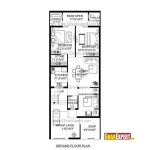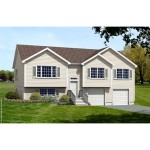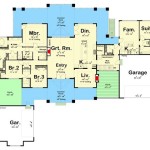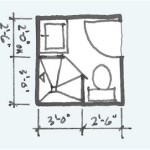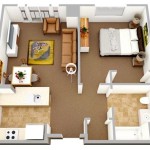One-Level Home Plans with Basement: Maximizing Space and Value
The concept of a one-level home plan paired with a basement represents a compelling proposition for numerous homeowners. This design approach merges the accessibility and convenience of single-story living with the expanded space and potential adaptability that a basement provides. Such a combination is particularly appealing for individuals seeking age-in-place solutions, families requiring extra room for various activities, or homeowners looking to increase property value through effective space utilization.
One-level home plans, also known as ranch-style homes, are characterized by their horizontal layouts and typically feature all living areas on a single floor. This eliminates the need for stairs, making them ideal for individuals with mobility limitations or those planning for long-term accessibility. However, the inherent footprint of a single-level home can sometimes be a constraint, especially on smaller lots or in areas with high land costs. This is where the inclusion of a basement becomes a significant advantage.
Basements expand the usable square footage of a home without significantly altering its external appearance or requiring a larger building footprint. They offer a blank canvas for a variety of purposes, from storage and utilities to finished living spaces like recreation rooms, home offices, or additional bedrooms. The versatility of a basement allows homeowners to tailor the space to their specific needs and evolving lifestyle.
Key Point 1: Accessibility and Aging-in-Place Benefits
The primary advantage of combining a one-level home plan with a basement lies in its ability to cater to diverse lifestyle needs, particularly those related to accessibility and aging in place. A single-story layout eliminates the necessity for navigating stairs, which can be a significant challenge for individuals with mobility limitations, seniors, or families with young children. This design ensures that essential living areas, such as the kitchen, bathrooms, and bedrooms, are easily accessible to everyone.
While the main living areas of the home offer barrier-free access, the basement provides additional space that can be adapted as needed. For instance, a basement can be transformed into an accessible guest suite for visiting family members or used for specialized equipment related to healthcare. Furthermore, the basement can serve as a safe refuge during severe weather events, particularly in regions prone to tornadoes or hurricanes.
The presence of a basement also adds a layer of future-proofing to the home. As homeowners age, their needs may change, and the basement can be readily adapted to accommodate those changes. This might involve converting the space into a caregiver's suite, a hobby room, or simply a dedicated storage area for items that are no longer frequently used.
Consideration must be given to basement access, particularly for accessibility purposes. While interior stairs are common, an exterior entrance, such as a walk-out basement design, can provide a more direct and accessible route. This is especially beneficial for individuals using wheelchairs or other mobility aids.
Key Point 2: Maximizing Space and Functionality
The addition of a basement to a single-level home plan effectively doubles the available square footage without increasing the home's footprint on the property. This is particularly advantageous in areas where lot sizes are limited or where zoning regulations restrict the allowable building area. The basement provides ample space for a wide range of functions, from practical storage to fully finished living areas.
One of the most common uses for a basement is storage. It provides a convenient and out-of-sight location for storing seasonal items, holiday decorations, tools, and other belongings that are not needed on a daily basis. A well-organized basement can significantly reduce clutter in the main living areas of the home.
Beyond storage, basements can be transformed into functional living spaces. Popular options include recreation rooms, home theaters, home offices, gyms, and guest suites. The flexibility of the basement allows homeowners to create personalized spaces that cater to their specific interests and needs.
For example, a family with teenagers might convert the basement into a dedicated game room and entertainment space. A professional who works from home might create a quiet and productive home office in the basement. Or a family with frequent guests might transform the basement into a comfortable and private guest suite with its own bathroom and kitchenette.
The use of a basement also allows for the separation of functional areas from living areas. Utilities such as the furnace, water heater, and laundry equipment can be housed in the basement, freeing up valuable space on the main level. This separation can also reduce noise and maintain a more peaceful living environment.
Key Point 3: Enhancing Property Value and Investment Potential
Integrating a basement into a one-level home plan can significantly enhance the property's value and overall investment potential. A finished basement effectively increases the livable square footage of the home, making it more attractive to potential buyers and increasing its market value. Even an unfinished basement can add value, as it provides a blank canvas that future owners can customize to their own preferences.
The value added by a basement depends on a variety of factors, including the level of finishing, the quality of construction, and the overall design of the space. A well-designed and professionally finished basement can command a significant premium over a comparable home without a basement.
Furthermore, a basement can increase the rental income potential of a property. A finished basement with a separate entrance can be rented out as a self-contained apartment, providing a source of passive income for the homeowner. This is particularly appealing in areas with high demand for rental housing.
The cost of adding a basement to a home plan varies depending on several factors, including the size of the basement, the soil conditions, and the level of finishing. However, in many cases, the added value and increased functionality of a basement outweigh the initial investment.
From an investment perspective, a one-level home plan with a basement offers a unique combination of accessibility, functionality, and long-term value. These homes are particularly appealing to a broad range of buyers, including families, seniors, and individuals with disabilities. This versatility makes them a sound investment for the future.
In considering one-level home plans with a basement, it's vital to analyze local building codes and soil conditions. Some areas may have restrictions or regulations concerning basement construction, and certain soil types may require specialized construction techniques to ensure the basement is dry and structurally sound. Thorough geotechnical investigations are recommended before beginning construction.
The integration of natural light into the basement design is another critical consideration. Adequate lighting can significantly improve the livability of the space and prevent it from feeling dark and claustrophobic. Options such as walk-out basements, window wells, and strategically placed lighting fixtures can help to maximize natural light and create a more welcoming environment.
Proper ventilation and moisture control are also essential for maintaining a healthy and comfortable basement environment. Adequate ventilation helps to prevent the buildup of moisture and mold, while moisture control measures, such as waterproofing and sump pumps, can protect against water damage. A well-designed basement should incorporate these features to ensure its long-term durability and usability.
Choosing the right type of foundation is also important. Common foundation types include poured concrete, concrete block, and precast concrete panels. The best choice depends on the specific site conditions and the desired level of finishing. Poured concrete is often preferred for its strength and water resistance, while concrete block is a more economical option.
Ultimately, one-level home plans with basements offer a practical and versatile solution for homeowners seeking to maximize space, increase functionality, and enhance property value. By carefully considering the design, construction, and finishing of the basement, homeowners can create a valuable addition to their home that meets their specific needs and preferences.

House Plan 957 00013 Cottage 6 765 Square Feet 4 Bedrooms 5 Bathrooms One Floor Plans Basement

One Level Design Plus Finished Basement 3930st Architectural Designs House Plans

Low Cost Single Story 4 Bedroom House Floor Plans Country Farm 2200 Sf Basement One Level

How To Choose The Right Floor Plan Niblock Homes

Walkout Basement House Plans With Photos From Don Gardner Houseplans Blog Com

House Designs Single Floor Low Cost Plans 3 Bedroom With Basement Ranch

One Story Living With Walkout Basement 86200hh Architectural Designs House Plans

Versatile Spacious House Plans With Basements Houseplans Blog Com

Small Cottage Plan With Walkout Basement Floor

One Story House Plans Daylight Basement Side Garage In 2024 Level

